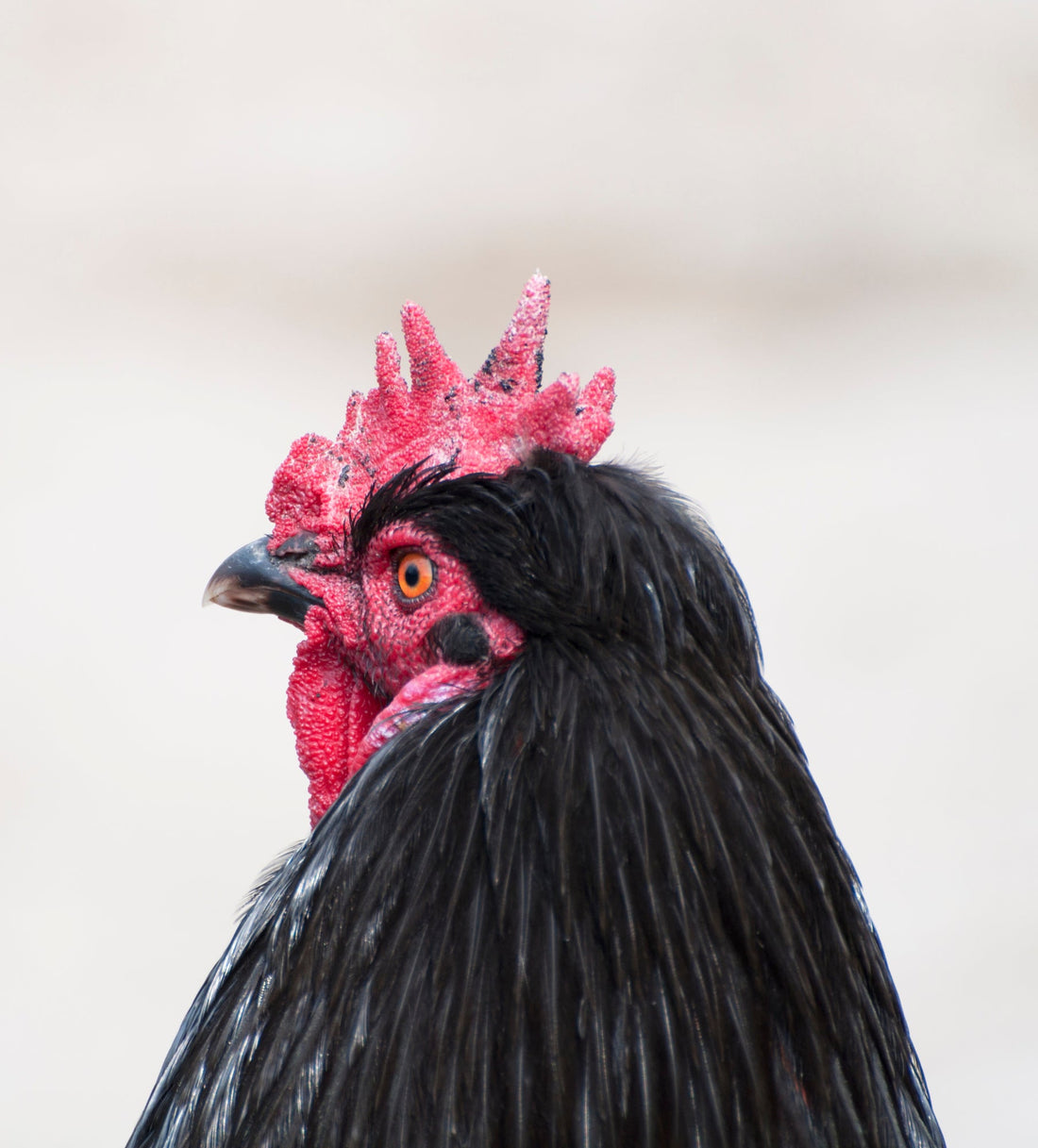As the mercury dips and Jack Frost starts nipping, not just at your nose but also at your chickens' combs and wattles, it's time to talk frostbite – the cold weather menace of the poultry world. Fear not, dear chicken keepers! With a bit of know-how and some cozy care, you can keep your flock's headgear safe from the icy grip of winter. Let's dive into the frosty facts of comb and wattle frostbite.
The Cold, Hard Truth About Frostbite
When winter rolls around, frostbite becomes a real concern in the poultry world. It's not just about snowmen and cozy firesides; for chickens, it's a season of vulnerability, especially for their combs and wattles. Let's delve deeper into this chilly challenge.
The Science of Frostbite in Chickens
A Freezing Phenomenon: Frostbite occurs when the tissue in the comb and wattles freezes. This happens because, in cold temperatures, chickens' bodies prioritize keeping their core warm, sometimes at the expense of extremities like combs and wattles.
Ice Crystals Form: In extreme cold, ice crystals can form in the tissue cells, causing damage and restricting blood flow. It's like tiny icicles invading their once flexible and vibrant combs and wattles.
The Progression of Frostbite
Frostbite in chickens usually follows a certain progression:
Early Stage: The combs and wattles may appear pale or a light shade of blue. They might feel colder to the touch than usual.
Intermediate Stage: If the exposure continues, the affected areas might darken, turning a purplish-blue or even black. At this point, the tissue is beginning to die.
Advanced Stage: In severe cases, the frostbitten areas can become black and hard. This is a sign of deep tissue damage and necrosis (tissue death).
Factors That Increase Risk
Breed and Physical Traits: Breeds with larger combs and wattles, like the aforementioned Leghorns, are more at risk. The larger the comb (like the single combs), the more it's exposed to the cold.
Humidity and Wet Conditions: Dampness increases the risk of frostbite. Wet combs and wattles can freeze more easily than dry ones.
Wind Chill: Windy conditions can exacerbate the effects of cold temperatures, making frostbite more likely.
Why Frostbite is More Than Just a Winter Worry
Ignoring or overlooking frostbite can lead to complications that affect your chickens’ overall health and wellbeing.
Infection Risk: Damaged tissue is prone to infection. If the skin breaks or necrosis sets in, it opens the door for bacteria to enter.
Long-Term Damage: In severe cases, frostbite can cause permanent damage to the combs and wattles, affecting everything from their appearance to potential mating behaviors.
Pain and Discomfort: Like in humans, frostbite is painful for chickens. It can cause distress and discomfort, impacting their quality of life.
Recognizing the Villain: Signs of Frostbite
Color Changes: Frostbitten combs and wattles may turn from bright red to pale, bluish, or even black.
Texture Trouble: They might feel hard to the touch, as if they’ve turned into tiny, red ice sculptures.
The Mood Indicator: Chickens with frostbite might be less active and show signs of discomfort. After all, a frozen headpiece is no fun!
Preventing Frosty Fiascos: Keeping Combs and Wattles Warm
Housing is Key
Cozy Coops: Ensure your coop is well-insulated but also well-ventilated. It’s like setting up a snug winter cabin for your feathered friends.
Draft-Free but Breathable: Eliminate drafts, but ensure there’s still good airflow. Moisture + cold air = a frostbite party, and not the fun kind.
Petroleum Jelly: A Chicken's Winter Balm
Apply Liberally: Before the cold sets in, slather combs and wattles with petroleum jelly. Think of it as applying a protective winter balm.
Repeat as Needed: Reapply regularly throughout the winter, especially on the coldest days.
Special Care for the Fancy Breeds
The Big Combed and Wattled: Breeds with larger combs and wattles, like Leghorns or Polish, are more susceptible to frostbite. They might need extra attention and petroleum jelly applications.
When the Damage is Done: Caring for Frostbitten Feathers
Keep it Clean and Dry
Gentle Care: If frostbite does occur, keep the affected areas clean and dry. It’s like giving them a little chicken spa treatment, minus the pampering.
No Thawing: Resist the urge to warm up the frostbitten areas quickly. A slow thaw is the way to go.
Monitoring and Comfort
Keep an Eye Out: Watch for signs of infection or further damage. Frostbite can sometimes lead to tissue damage, so stay vigilant.
Comfort Food and Drink: Make sure your frostbitten friends have easy access to food and water. Comfort eating is not just a human thing!
The Dangers of Letting It Slide: Why Frostbite Isn’t Cool
Ignoring frostbite can lead to serious complications for your chickens. In severe cases, it can cause tissue damage and lead to infections. In the worst scenarios, it might even result in the loss of combs or wattles – a definite downer in the chicken beauty stakes.
Frostbite in chickens might sound like a chilling tale, but with proper prevention and care, it’s a winter woe that can often be avoided. Remember, a little bit of winter prep can go a long way in keeping your flock happy, healthy, and frost-free. So, bundle up your birds and get ready for some cold-weather clucking! Happy winter chicken-keeping! 🐔❄️🧤

